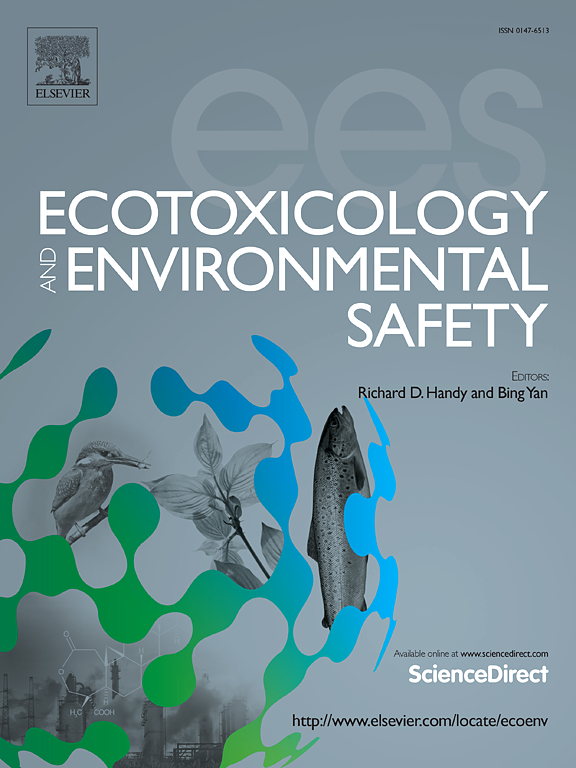Associations of multiple plasma metals with the risk of type 2 diabetes in Chinese adults: A cross-sectional study
IF 6.2
2区 环境科学与生态学
Q1 ENVIRONMENTAL SCIENCES
引用次数: 0
Abstract
Evidence regarding the associations between co-exposure to multiple metals and diabetes risk was scarce. This study aimed to evaluate the associations of multiple metals with diabetes risk using multiple statistical methods. This cross-sectional study included 192 diabetic patients and 189 healthy subjects. We employed inductively coupled plasma mass spectrometry (ICP-MS) to determine the plasma concentrations of 18 metals. Least absolute shrinkage and selection operator (LASSO) regression, logistic regression, and Bayesian kernel machine regression (BKMR) were applied to evaluate associations of multiple metals with diabetes risk comprehensively. These models consistently suggested that aluminium and selenium were positively associated with diabetes risk, while manganese, rubidium, and lead were negatively associated with diabetes risk. Age-specific differences of selenium and sex-specific differences of manganese in diabetes risk were also observed based on stratified analyses. According to RCS analyses, we obtained dose-response relationships between metals and diabetes risk:(1) there were inverted U-shaped associations of plasma aluminium and selenium with diabetes risk, with the threshold close to 20.5µg/L and 75.9µg/L, respectively (both P for overall < 0.05; both P for non-linearity < 0.05). (2) There were L-shaped associations of rubidium and lead with diabetes risk, with the turning point close to 144.5µg/L and 2.5µg/L, respectively (both P for overall < 0.05; both P for non-linearity < 0.05). (3) Manganese was linearly and negatively correlated with diabetes risk when concentrations of manganese were less than approximately 4.2 μg/L (P for overall < 0.05; P for non-linearity = 0.268). The BKMR model also revealed a negative combined effect of metal mixtures on diabetes risk and potential interactions between six pairs of metals (aluminium-manganese, aluminium-selenium, aluminium-rubidium, aluminium-lead, manganese-selenium, and manganese-rubidium). In summary, we need to pay attention to the role of low plasma levels of aluminium, selenium, manganese, rubidium, and lead in diabetes, especially regarding their safety windows.
求助全文
约1分钟内获得全文
求助全文
来源期刊
CiteScore
12.10
自引率
5.90%
发文量
1234
审稿时长
88 days
期刊介绍:
Ecotoxicology and Environmental Safety is a multi-disciplinary journal that focuses on understanding the exposure and effects of environmental contamination on organisms including human health. The scope of the journal covers three main themes. The topics within these themes, indicated below, include (but are not limited to) the following: Ecotoxicology、Environmental Chemistry、Environmental Safety etc.

 求助内容:
求助内容: 应助结果提醒方式:
应助结果提醒方式:


